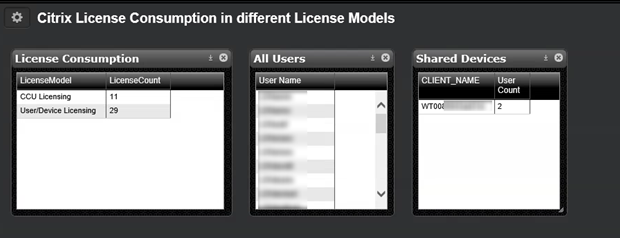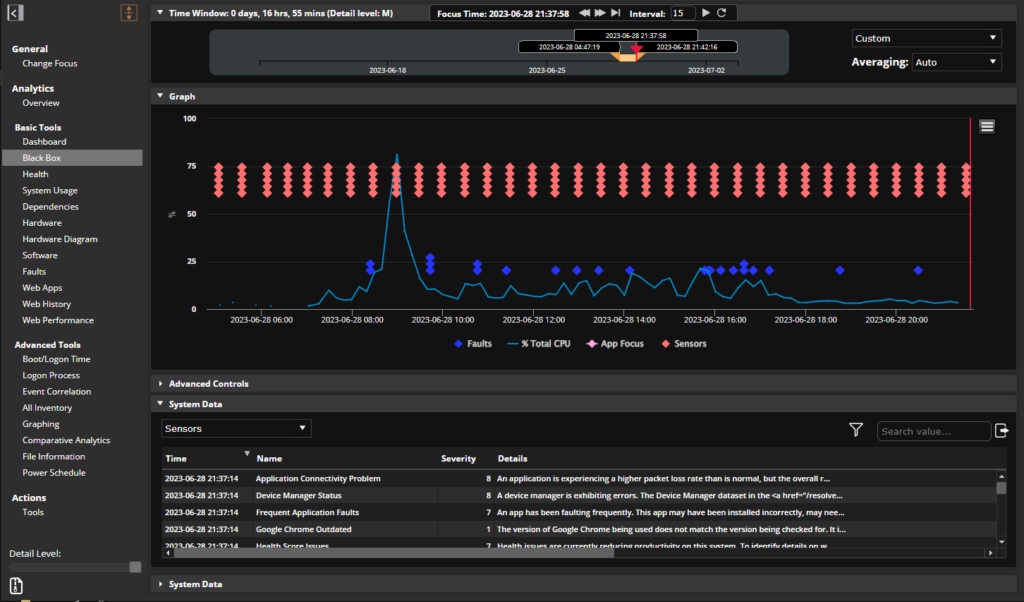Citrix Licensing – Deciding between concurrent and user/device licenses

Note: An updated version of this discussion (2018) can be found here.
Citrix XenApp and XenDesktop are available in two general licensing models:
- Concurrent licensing. This model is intended for one connection to a virtual desktop or unlimited apps for any user and any device – a license is only consumed for the duration of an active session. If the session disconnects or is terminated, the license will be checked back into the pool.
- User/Device licensing. Under this model, the license is either assigned to a unique user or shared device. If assigned to a user, it allows that single user unlimited connections from unlimited devices. If assigned to a device, it allows unlimited users, unlimited connections from that single device.
Free white paper: “Citrix XenApp FMA Migration with Lakeside SysTrack”
The User/Device license is typically half of the price of a concurrent license and can be an attractive model for organizations that follow a “traditional” work schedule (as opposed to shift workers in manufacturing or healthcare, where they may be a large number of individuals, but only a fraction of which are concurrently using the XenApp or XenDesktop environment.)
Internally, and this is the topic of this article, if Citrix XenApp / XenDesktop is configured for the user/device license model, the Citrix license server has to decide whether to assign the license to a user OR to a device. These are two different things, although customers purchase a user/device (as in user SLASH device) license. So, how does this work?
Assume I, florianb, log into my organization’s environment and launch a session. At that time, a user license is consumed. I can run as many sessions from as many XenDesktop sites that share the license server as I like and use as many devices as I care to – it’s still one user license.
Assume that one of the devices I use is a shared thin client in the office. An hour after I leave, my co-worker Alex uses the same client to access his virtual desktop. Citrix internally then marks that particular thin client as a shared device and it consumes a device license. Theoretically, I could have 100 employees each use the same thin client and only consume a single user/device license.
It becomes apparent that the recognition of shared devices is an automated way for organizations to minimize the number of licenses they need.
Most of us, however, have a mix of environments, so Citrix is calculating the total number of user/device licenses as follows:
# User/Device licenses = (# of total users) + (# of shared devices) – (# of users who only access from a shared device) Makes sense? Here’s a simple example:
| User/Device | Devices Used | User License Consumed? | Device License Consumed? |
|---|---|---|---|
| Paul | Client01 | No, because Paul is only using a shared device (Client01, which is also used by Florian, Alex, and Amanda) | N/A |
| Florian | Client01 Florian’s PC Florian’s iPad Florian’s Laptop | Yes, because he is using one or more non-shared devices | N/A |
| Alex | Client01 | No, because Alex is only using a shared device | N/A |
| Amanda | Amanda’s iPad Client01 | Yes, because Amanda is using a non-shared device (her iPad) | N/A |
| Client01 | Used by: Paul, Florian, Alex, and Amanda | N/A | Yes – because Client01 is used by more than one user |
| Florian’s PC | Used by Florian | N/A | No – because Florian is consuming a user license so he can use an unlimited number of licenses |
| Florian’s iPad | Used by Florian | N/A | No – Florian is consuming a user license so he can use an unlimited number of devices |
| Florian’s Laptop | Used by Florian | N/A | No – Florian is consuming a user license so he can use an unlimited number of devices |
| Amanda’s iPad | Used by Amanda | N/A | No, Amanda is consuming a user license so she can use an unlimited number of devices |
So, in this example, we would need a total of 3 user/device licenses, even though we have 4 individual users and 6 individual devices in the mix. Given that the price point for a concurrent license is 2x that of a user/device license, this small sample organization would absolutely benefit from user/device licensing as they may need as many as 4 concurrent users licenses.
The Citrix license optimization definitely works in the customer’s favor and the license allocation happens on a 90 day schedule for user/device licenses (i.e. the license of a user who is no longer in the organization or a device that is no longer in use get automatically released after 90 days or can be released immediately with a license management tool under terms of the Citrix EULA).
However, it can be a little difficult to predict what an organization might need. Lakeside SysTrack is a great tool to look at all sessions (say in an existing XenApp concurrent environment) to determine if a trade-up to user/device licensing would make sense. To illustrate the point, I’ve mocked up a quick and easy dashboard in SysTrack’s dashboard builder to look at one of the many environments we’re running internally.
In this particular example, our peak user concurrency was 11 and we would have needed 29 user/device licenses. We’re better off staying with concurrent licensing in this example.
Equally, if a traditional desktop environment is being assessed, SysTrack can make the choice between concurrent and user/device licensing very easy.
Note: While Citrix has reviewed this blog for accuracy at the time of this writing, Lakeside Software cannot make any representations on behalf of Citrix. Please always check with your authorized reseller, Citrix account manager and on citrix.com for the latest updates in product and licensing functionality.
You may also be interested in…
Subscribe to the Lakeside Newsletter
Receive platform tips, release updates, news and more




